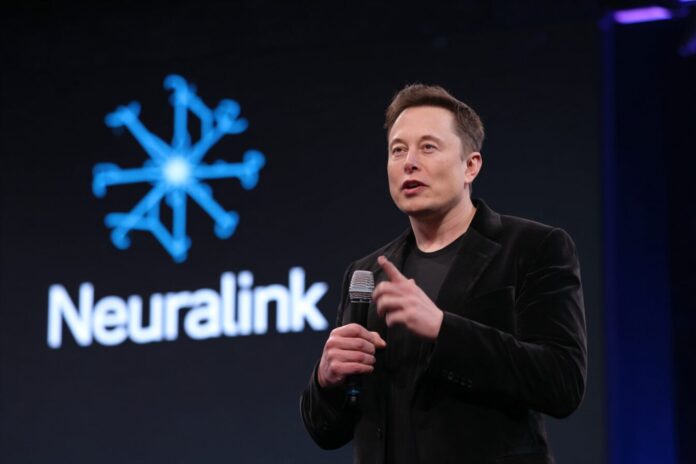Neuralink’s Surprising ‘Disadvantaged’ Status Amid Billion-Dollar Valuation
Most importantly, Elon Musk’s Neuralink—the pioneering brain-computer interface startup—has recently grabbed headlines not only for its breakthrough technology but also for its unique self-classification as a “small disadvantaged business” (SDB) with the U.S. federal government. Because the company appears to be leveraging a status typically reserved for under-resourced businesses, this revelation has sparked intense debate in tech and government circles.
In addition, the decision to adopt an SDB designation comes at a time when Neuralink is valued at an astonishing $9 billion. This dual narrative of cutting-edge innovation and unexpected regulatory positioning has enticed investors and policy analysts alike. Therefore, stakeholders are carefully examining whether Neuralink’s status could ultimately influence its access to crucial federal contracts and research grants.
Understanding the ‘Small Disadvantaged Business’ (SDB) Designation
The U.S. Small Business Administration (SBA) defines an SDB as an enterprise that is at least 51% owned and operated by socially and economically disadvantaged individuals. Most importantly, this category is intended to level the playing field for businesses that have historically struggled to secure capital and federal contracts. Besides that, these guidelines aim to foster equal opportunities in sectors where innovation can bridge social divides.
Because the SDB classification is designed to support smaller, less resource-rich businesses, the fact that Neuralink qualifies under its current structure is perplexing. Analysts note that individuals with a net worth exceeding $850,000—excluding any home equity—are usually disqualified from such status. Therefore, the certification raises questions regarding the interpretation of economic disadvantage when applied to a company led by someone with immense wealth.
Neuralink’s Billion-Dollar Ascent
Since its inception, Neuralink has blossomed from a daring experimental venture into a central figure in the neurotechnology industry. Initially, the company was viewed as a speculative idea, but because of its breakthroughs in brain-computer interface technology, investors quickly became enthusiastic. In May 2025, Neuralink closed a $600 million fundraising round, which catapulted its valuation to the current $9 billion mark. In this context, the company’s rapid growth is a testament to both its technological promises and effective market positioning.
Moreover, during its earlier phases, Neuralink saw significant milestones such as successful implantation of its brain chips in a series of patients. These patients exhibited early signs of restored or enhanced functionalities—some even managing to articulate speech using the device. Consequently, such landmark achievements have solidified Neuralink’s reputation, further fueled by high-profile media coverage in outlets like TechCrunch and Semafor, making it a household name in both technological and financial circles.
The Paradox: Billionaires and Disadvantage
Neuralink’s self-designation as an SDB has provoked a paradoxical debate, especially because it is majority-owned by Elon Musk, whose estimated wealth exceeds $364 billion. Because the SBA clearly stipulates that to be categorized as an SDB a business must be primarily owned by individuals who are both socially and economically disadvantaged, the application of this status to Neuralink has led to considerable skepticism.
Besides that, industry experts speculate that complex technicalities around share distribution and internal ownership structures might partly explain this anomaly. However, the fundamental discord between the lofty financial stature of Musk and the intended purpose of SDB programs remains evident. Most importantly, this contradiction has spotlighted broader systemic issues regarding regulatory loopholes and the alignment of government policies with modern Silicon Valley practices as detailed by recent analyses on platforms like AOL.
Advantages and Strategic Rationale Behind SDB Certification
One key reason for pursuing SDB status is the tangible benefits it offers. Because it provides access to set-aside contracts, specialized training programs, and significant federal research funds, even a well-established firm like Neuralink can find strategic value in this classification. In this light, the SDB certification can be perceived as a smart business maneuver, especially in a landscape that fiercely competes for government-backed opportunities.
Moreover, the federal recognition associated with SDB status can facilitate smoother interactions with policy makers and industry regulators. Therefore, by aligning itself with the SDB program, Neuralink may position itself favorably for future governmental partnerships—a tactic seen in other technology sectors that benefit from federal endorsements and financial incentives.
Public and Industry Reaction
The news of Neuralink’s SDB self-identification has ignited widespread discussion among technology insiders and policy advocates. Many industry experts have expressed concerns over the potential for regulatory exploitation. Because the move appears to exploit existing federal guidelines, critics have argued that it may be indicative of broader systemic loopholes present in the federal certification process, as observed by commentators on Forge Global and other investment analysis platforms.
In addition, public sentiment is divided. Some celebrate the innovative spirit of Neuralink while others warn that such designations might compromise the integrity of federal support systems. Therefore, it is clear that this development has become a touchstone for debates not only about technological innovation but also about economic fairness and regulatory integrity.
Looking Ahead: Regulatory Scrutiny and the Future of Business Certifications
The unfolding situation with Neuralink underscores a larger conversation about regulatory oversight in fast-moving industries. Because technology is advancing rapidly, federal standards and certifications are increasingly struggling to keep pace with innovations. As a result, high-profile cases like this one expose the need for updated guidelines that accurately reflect modern business realities and technological achievements.
Furthermore, stakeholders expect enhanced regulatory scrutiny and clearer frameworks that reconcile the goals of supporting disadvantaged businesses with the realities of deep-pocketed, high-growth startups. Most importantly, this debate is likely to drive future policy revisions that ensure government certifications remain both equitable and relevant in today’s competitive environment. For more detailed insights on evolving tech policies, readers can refer to the in-depth coverage available on Neuralink’s official blog.
References
- Semafor: Neuralink raises fresh cash at $9B valuation
- AOL: Elon Musk’s brain implant startup sparks debate
- TechCrunch: Neuralink’s $600M round at $9B valuation
- Neuralink Raises $650M Series E
- Forge Global: Neuralink stock and SDB certification insights



